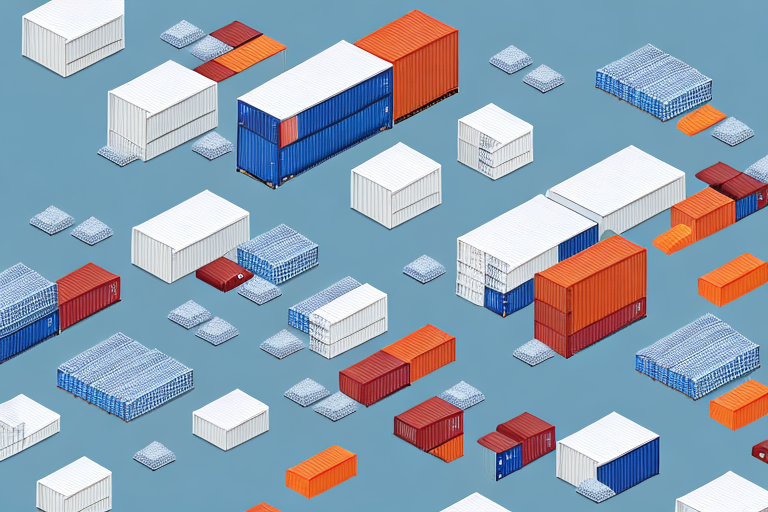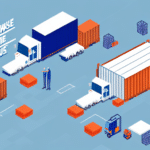Understanding Inbound Shipping
Inbound shipping refers to the transportation of goods from suppliers to a company’s warehouse or distribution center. This process is a critical component of supply chain management, ensuring the timely and efficient flow of goods to meet consumer demand. Effective inbound shipping strategies can significantly enhance operational efficiency and profitability.
The Basics of Inbound Shipping
Inbound shipping encompasses the entire process starting from when a purchase order is placed to the final delivery of products. Key elements include specifying the quantity, weight, and delivery dates to suppliers, which helps in reducing delays and transportation errors. Proper documentation—such as bills of lading, commercial invoices, and packing lists—is essential to comply with customs and regulatory requirements, preventing potential delays and fines.
The Role of Inbound Shipping in Logistics
Inbound shipping is integral to supply chain management, affecting a business’s profitability, operations, and customer satisfaction. Efficient inbound shipping practices enable companies to:
- Meet consumer demand consistently
- Reduce transportation costs
- Manage inventory effectively
- Enhance supply chain visibility and control
By optimizing inbound shipping, businesses can avoid stockouts, minimize lead times, and respond swiftly to market changes, thereby improving overall operational responsiveness.
Inbound Shipping Methods
Types of Inbound Shipping Methods
Inbound shipping methods include air, sea, rail, and road transportation. The choice of method depends on factors such as shipment size, weight, destination, and cost-effectiveness:
- Air Transport: Ideal for time-sensitive and smaller shipments. It offers fast delivery but comes at a higher cost.
- Sea Transport: Suitable for large and bulky shipments. It is cost-effective but slower compared to air transport.
- Rail Transport: Best for heavy or bulky shipments within specific regions. It offers a balance between cost and speed.
- Road Transport: Flexible and reliable for regional shipments but has limited cargo capacity.
Pros and Cons of Different Shipping Modes
Each shipping mode has its advantages and disadvantages:
- Air Transport: Fast and less affected by traffic, but expensive and subject to strict regulations.
- Sea Transport: Cost-effective for large volumes, environmentally friendly, but slower and susceptible to weather conditions.
- Rail Transport: Reliable and suitable for heavy goods, but limited by geographic coverage.
- Road Transport: Highly flexible with door-to-door service, but limited by traffic and road conditions.
Selecting the Right Carrier
Factors to Consider When Choosing a Carrier
Choosing the appropriate carrier is vital for successful inbound shipping operations. Key considerations include:
- Pricing: Evaluate carrier rates to ensure cost-effectiveness.
- Delivery Speed: Ensure the carrier can meet your delivery timelines.
- Reputation: Select carriers with a proven track record for reliability and customer service.
- Capacity: Ensure the carrier can handle your shipment volumes and specific needs.
Negotiating Inbound Shipping Rates
Negotiating favorable rates with carriers can significantly reduce transportation costs. Consider factors such as shipment volume, frequency, delivery locations, and the type of goods being shipped. Additionally, discuss potential discounts for long-term contracts or higher shipment volumes. Understanding the carrier’s pricing structure and service offerings can aid in securing the best possible rates.
Managing Inbound Shipments
Planning and Managing Shipments Effectively
Effective planning and management of inbound shipments involve:
- Developing a shipment schedule and process flowchart
- Establishing clear communication channels with suppliers and carriers
- Implementing performance metrics to assess shipping operations
- Utilizing inventory management software to track and manage stock levels
By adopting these practices, businesses can streamline their inbound shipping processes, reduce costs, and enhance overall efficiency.
Inventory Management During Inbound Shipments
Maintaining optimal inventory levels is crucial to balance supply and demand. Best practices include:
- Keeping accurate records of inbound shipments
- Establishing minimum and maximum inventory thresholds
- Investing in advanced inventory management systems
- Collaborating with suppliers for timely replenishments
Proper inventory management helps in preventing overstocking or stockouts, thereby improving operational efficiency and customer satisfaction.
Overcoming Common Inbound Shipping Challenges
Inbound shipping can present several challenges, such as unexpected delays, lost or damaged shipments, and supplier reliability issues. To mitigate these challenges:
- Establish robust communication protocols with suppliers
- Ensure proper packaging and handling of goods
- Invest in tracking technologies for real-time shipment visibility
- Develop contingency plans for potential disruptions
Best Practices for Inbound Shipping
Securing Your Products During Transit
Protecting products during inbound shipping is essential to prevent loss, damage, or theft. Implement the following best practices:
- Use high-quality packaging materials
- Seal shipments securely and mark them appropriately
- Utilize tracking devices and tamper-proof seals
- Conduct regular security audits and assessments
Leveraging Technology in Inbound Shipping
Technology plays a pivotal role in optimizing inbound shipping operations. Key technologies include:
- Inventory Management Software: Streamlines tracking and management of stock levels.
- Transportation Management Systems (TMS): Enhances route planning and carrier selection.
- Warehouse Management Systems (WMS): Improves warehouse operations and efficiency.
- Automated Tracking and Monitoring: Provides real-time visibility into shipment status.
Implementing these technologies can lead to significant improvements in operational efficiency, accuracy, and cost savings. According to a Supply Chain Digital report, businesses that adopt advanced technologies in their inbound logistics see a 20-30% improvement in efficiency.
Future Trends in Inbound Shipping
Automation and Robotics
The adoption of automation and robotics in inbound shipping is transforming the industry. Automated systems enhance accuracy and speed in warehouse operations, reduce labor costs, and minimize human error. Robotics are increasingly used for tasks such as sorting, packing, and inventory management.
Sustainable and Environmentally Friendly Transportation
There is a growing emphasis on sustainability within inbound shipping. Companies are adopting green transportation methods, such as using electric vehicles and optimizing shipping routes to reduce carbon emissions. According to the International Civil Aviation Organization, the aviation industry is investing in sustainable fuels to lower its environmental impact.
Growth of E-Commerce and Omnichannel Retail
The surge in e-commerce and omnichannel retailing is driving changes in inbound shipping. Businesses must adapt to increased order volumes and the demand for faster delivery times. Integrating inbound shipping with omnichannel strategies allows for seamless operations and improved customer experiences.
Case Studies: Successful Inbound Shipping Strategies
Walmart's Optimized Inbound Shipping Practices
Walmart has achieved significant cost savings and operational efficiency through optimized inbound shipping. By leveraging advanced data analytics and integrating technology into their supply chain, Walmart ensures timely deliveries and maintains high inventory turnover rates.
Nestlé's Enhanced Shipping Visibility
Nestlé has utilized technology to improve visibility in their inbound shipping operations. Implementing tracking systems and real-time data analytics has allowed Nestlé to reduce transportation costs and enhance supply chain efficiency.
Amazon's Investment in Inbound Logistics
Amazon has heavily invested in its inbound logistics to increase efficiency and reduce delivery times. By building a vast network of fulfillment centers and utilizing advanced automation technologies, Amazon ensures rapid and reliable inbound shipping, supporting its extensive e-commerce operations.
Conclusion
Inbound shipping is a vital component of supply chain management that requires meticulous planning, efficient execution, and ongoing optimization. By understanding the fundamentals of inbound shipping, selecting the right carriers, negotiating favorable rates, and adopting best practices, businesses can streamline their operations, maximize profits, and maintain a competitive edge in the market. Embracing technological advancements and staying abreast of industry trends will further enhance inbound shipping efficiency and effectiveness.






















